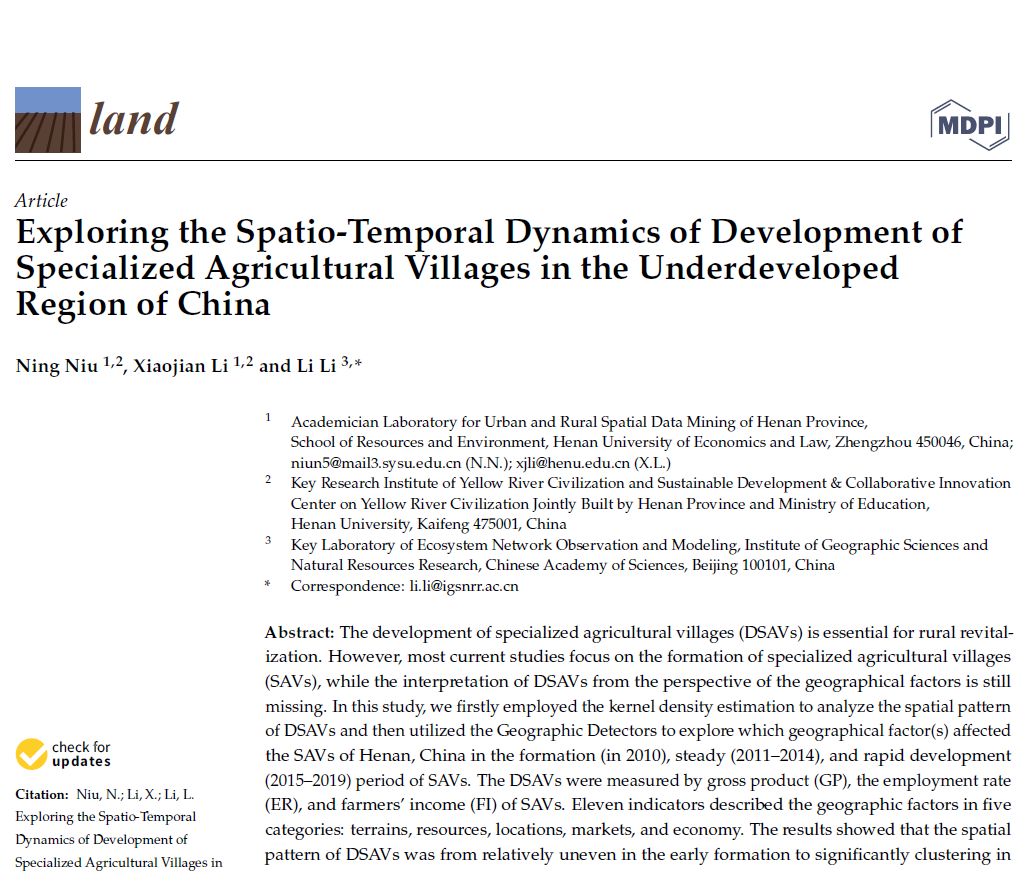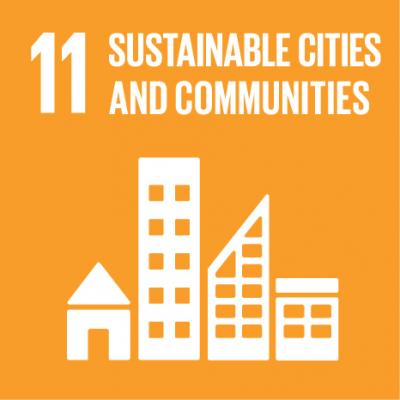The development of specialized agricultural villages (DSAVs) is essential for rural revitalization. However, most current studies focus on the formation of specialized agricultural villages (SAVs), while the interpretation of DSAVs from the perspective of the geographical factors is still missing. In this study, we firstly employed the kernel density estimation to analyze the spatial pattern of DSAVs and then utilized the Geographic Detectors to explore which geographical factor(s) affected the SAVs of Henan, China in the formation (in 2010), steady (2011–2014), and rapid development (2015–2019) period of SAVs. The DSAVs were measured by gross product (GP), the employment rate (ER), and farmers’ income (FI) of SAVs. Eleven indicators described the geographic factors in five categories: terrains, resources, locations, markets, and economy. The results showed that the spatial pattern of DSAVs was from relatively uneven in the early formation to significantly clustering in the development period of SAVs. Specialized shiitake and Chinese herbal villages clustered in the mountain–plain transition zone. The aggregation of specialized coarse cereals villages was in the hill–plain transition zone. Specialized fruit and livestock villages gathered in the plain region. Further analyses were in these regions; compared with SAVs’ formation’s critical factors, the importance of terrain and location factors to DSAVs was decreasing, while market and economic factors were increasing in the development period of SAVs. The strongest changing was the development of specialized shiitake villages in the mountain–plain transition zone. These findings could provide guidance for the direction of DSAVs in underdeveloped areas.
Corresponding author: Li Li, li.li@igsnrr.ac.cn




